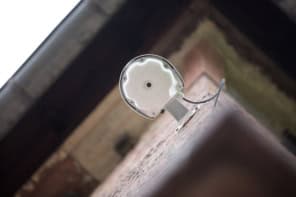Trumpet manufacturers are set to benefit from a new technique that accurately maps the internal profile of wind instruments. The technique developed by James Buick of the University of Edinburgh and colleagues uses ‘pulse reflectometry’ to build up a picture of the instrument from the reflections of an acoustic pulse travelling through it. Dents as small as 0.1 mm inside a trumpet can change its timbre (J Buick et al 2002 Meas. Sci. Technol. 13 750).
The main body of a wind instrument is connected to its mouthpiece by a ‘leadpipe’ that has an inner radius of about 7 mm, so even a small defect can significantly change the sound of the instrument. Manufacturers have traditionally used calipers to measure the inner radius of the leadpipe, but this method only reveals its dimensions at the points of measurement and does not show the whole profile.
In contrast, the technique developed by Buick and colleagues maps the entire inner profile of the leadpipe. When an acoustic pulse travels though a tube, it is partially reflected and partially transmitted wherever the radius of the tube changes. Pulse reflectometry – which has also been used in medicine to study the windpipe – exploits this effect.
Buick’s team sent an acoustic pulse into a leadpipe and picked up the reflected sound waves with a microphone. Accounting for the energy absorbed by the walls of the leadpipe, they used a Fourier technique to convert this signal into a series of peaks corresponding to changes in its diameter. The complete profile of the leadpipe can then be calculated from the heights of these peaks and the time intervals between them.
The technique can measure the dimensions of a leadpipe to an accuracy of 0.03 mm, and the team established that the results were reliable by conducting the measurements ten times on a single leadpipe. The researchers say that this consistency is the main strength of the technique because manufacturers and players are more interested in the relative shapes of different leadpipes than in their actual dimensions.
According to Buick, the technique will be particularly useful for the leadpipes of cornets, which are bent by hand. “This curve makes it hard to detect defects with traditional measuring methods,” he says. “The next step will be to use the technique on whole instruments like trombones and French horns.”



